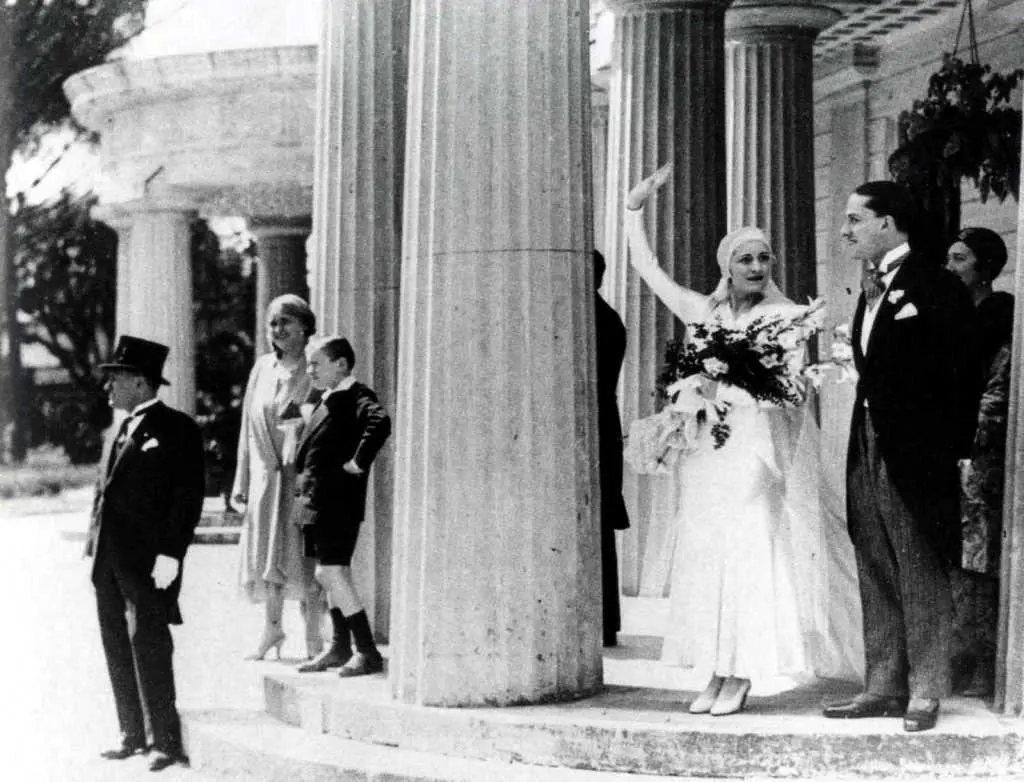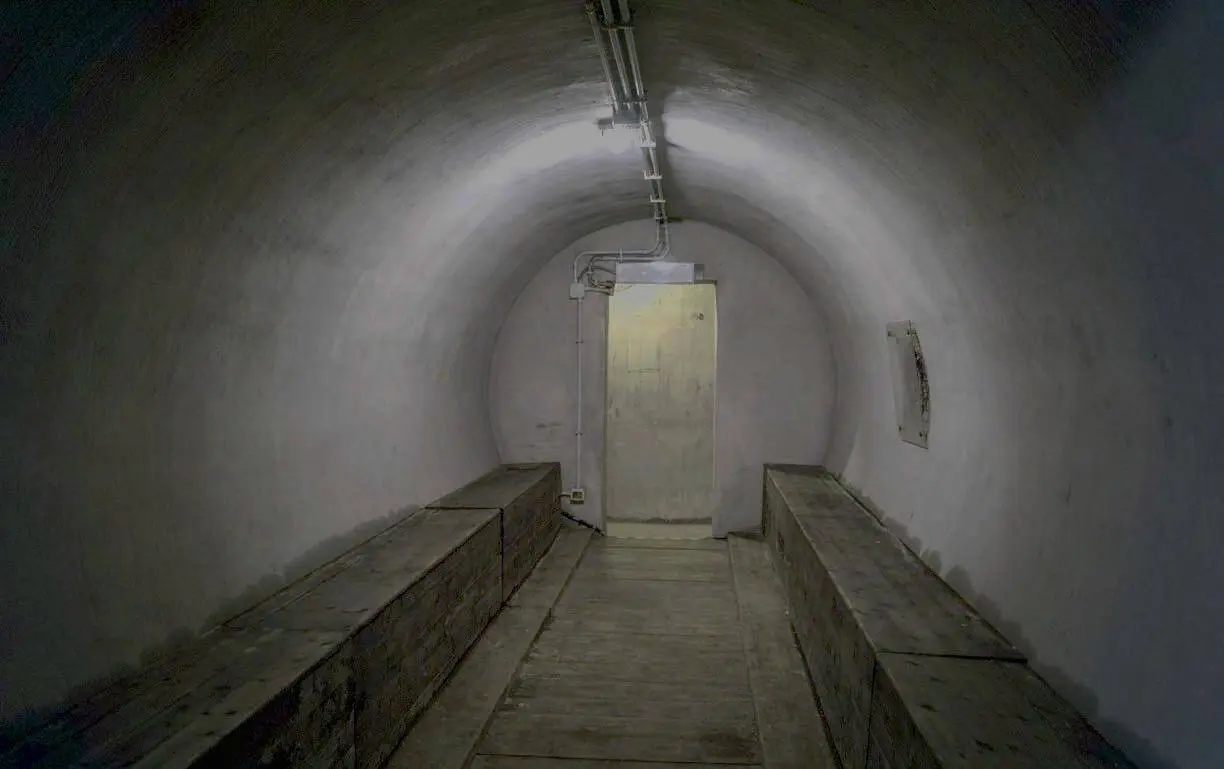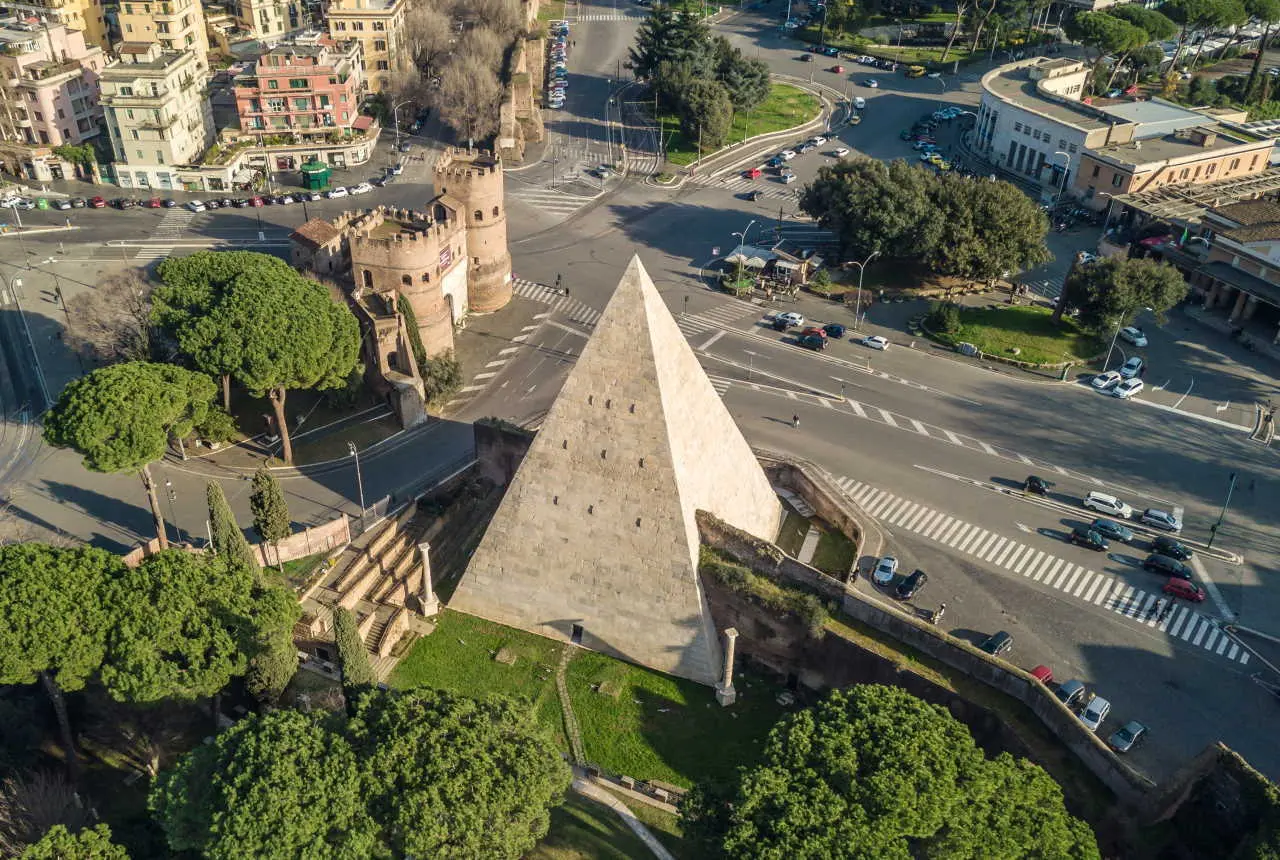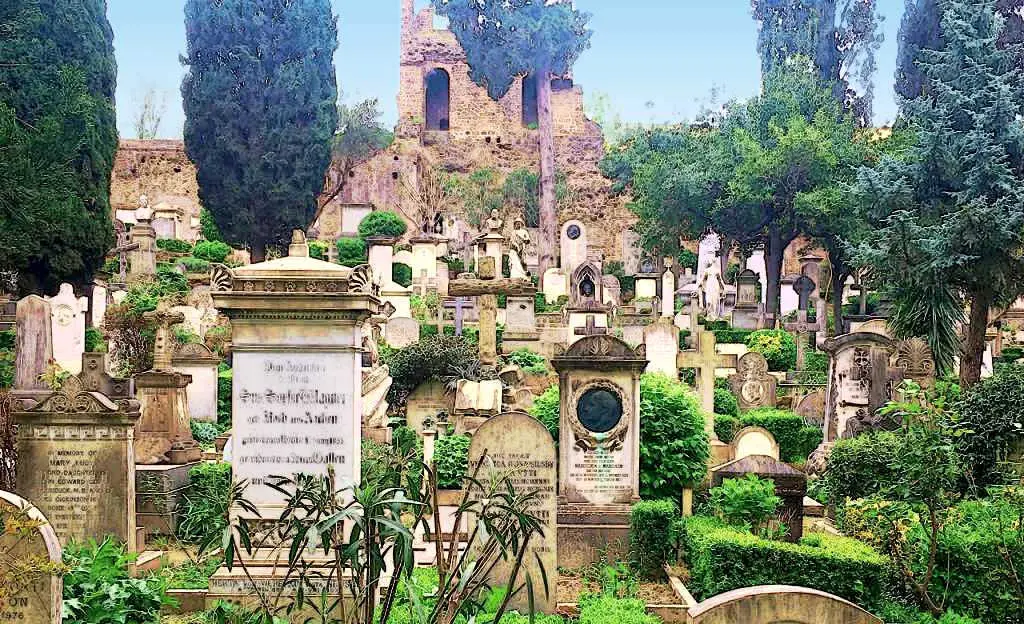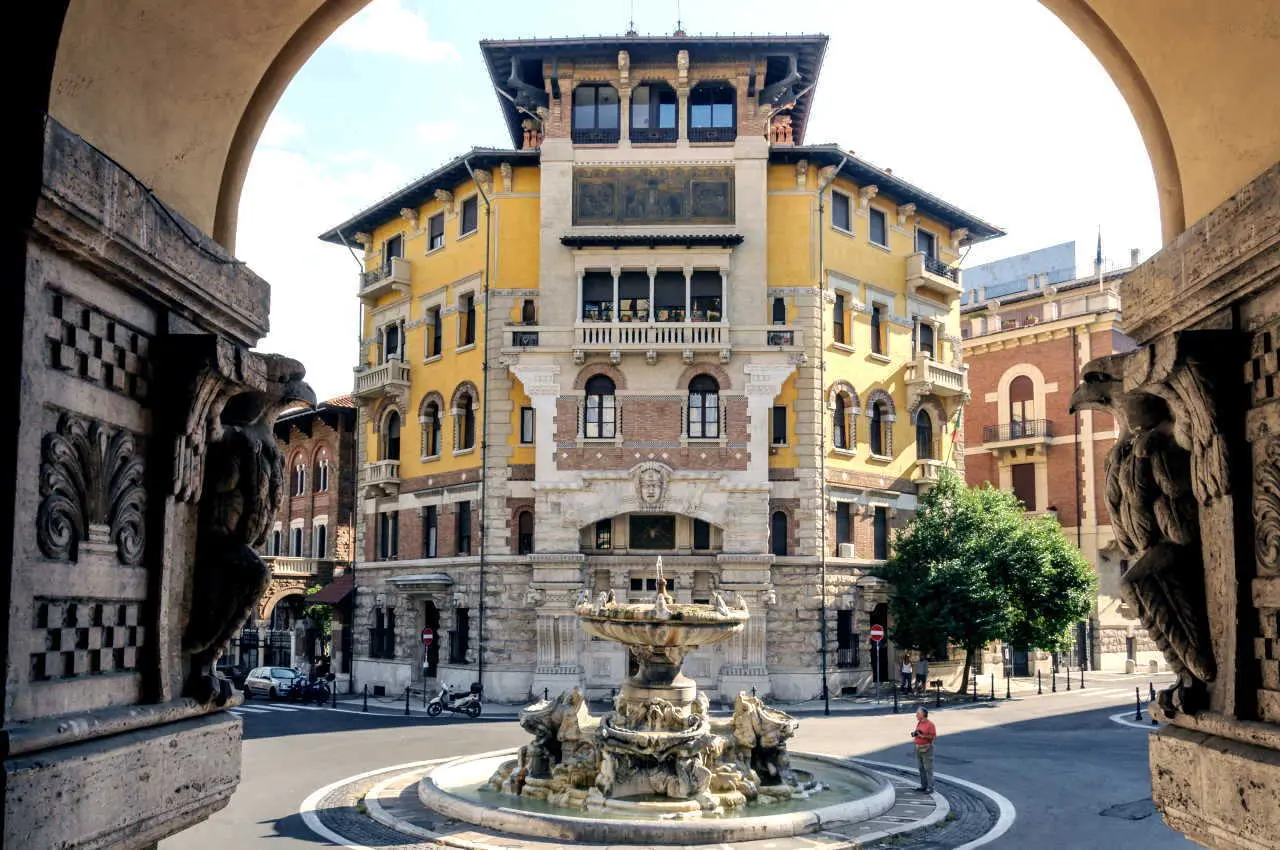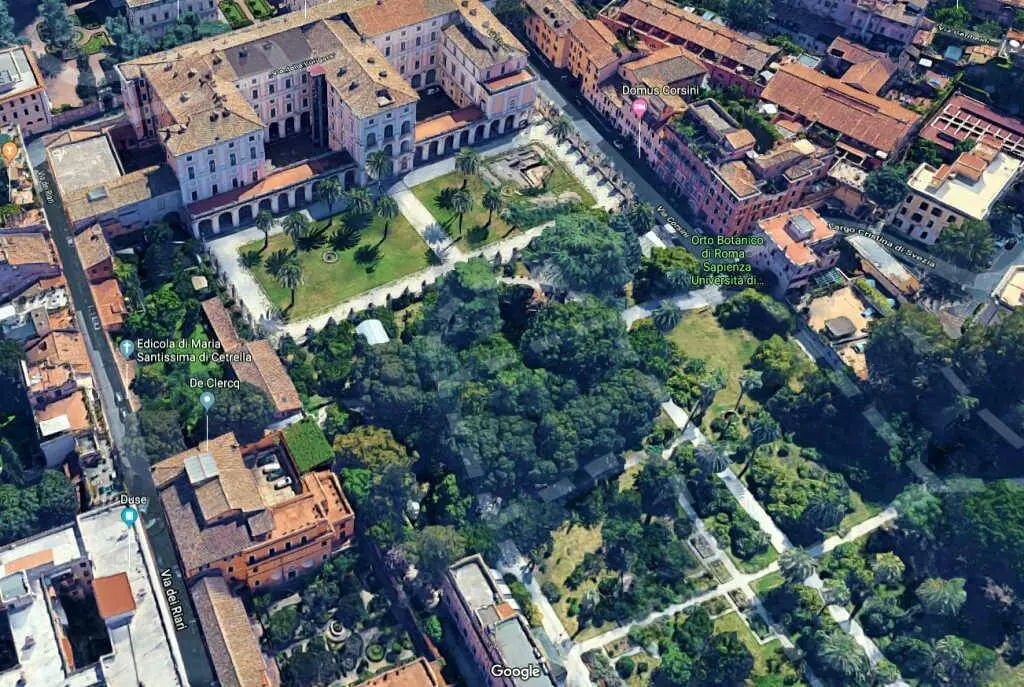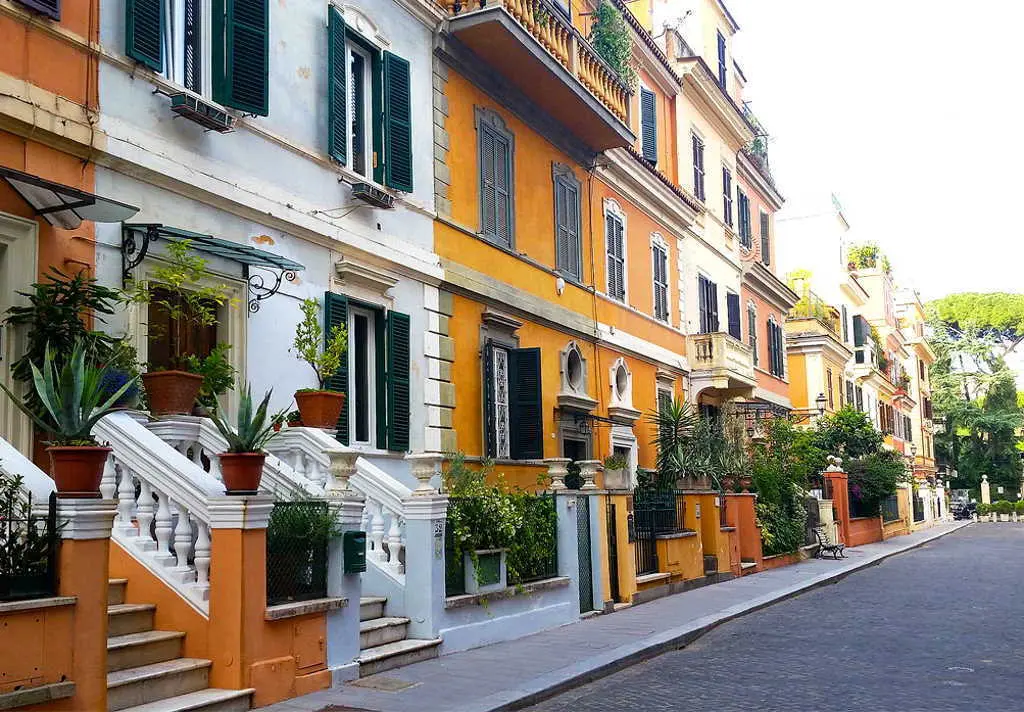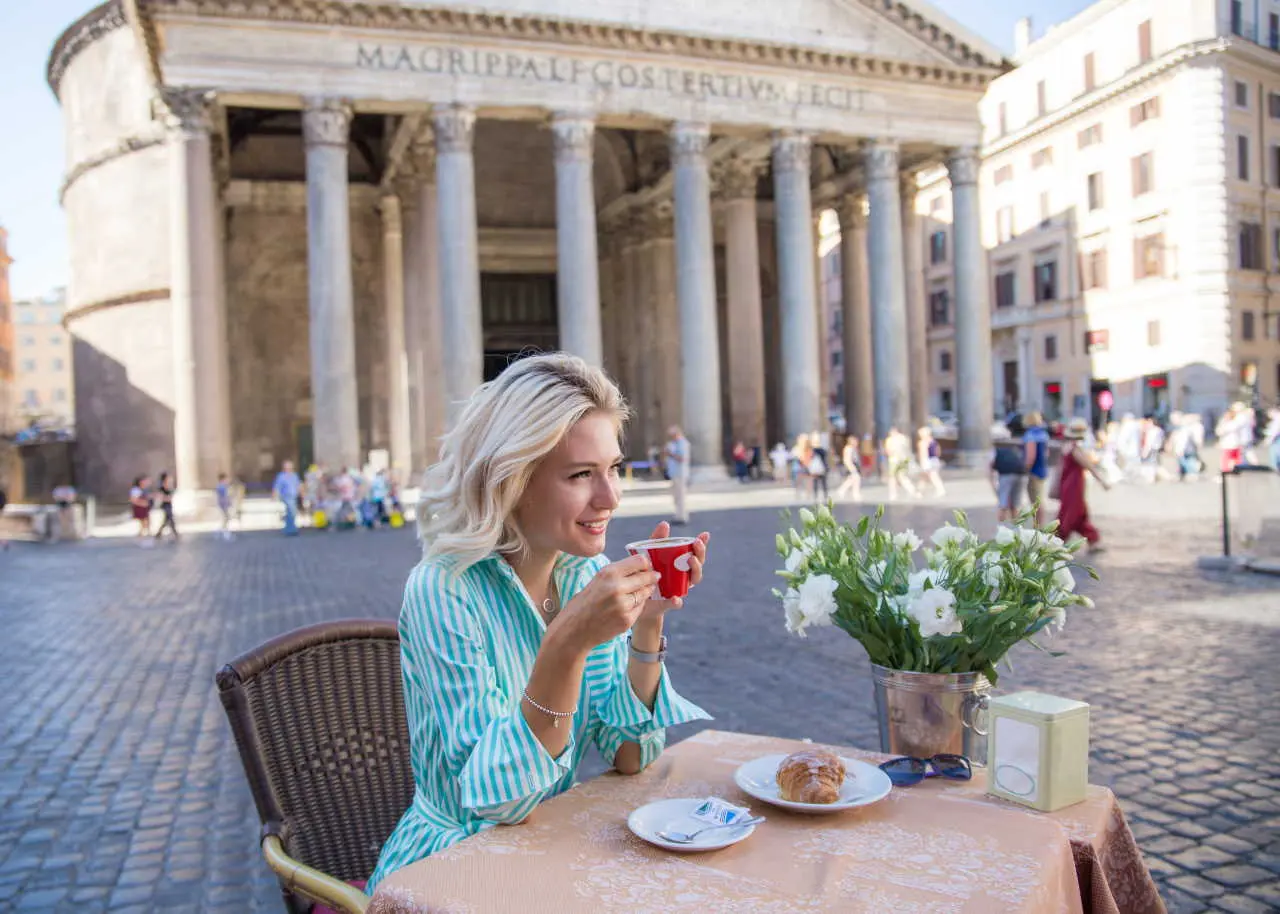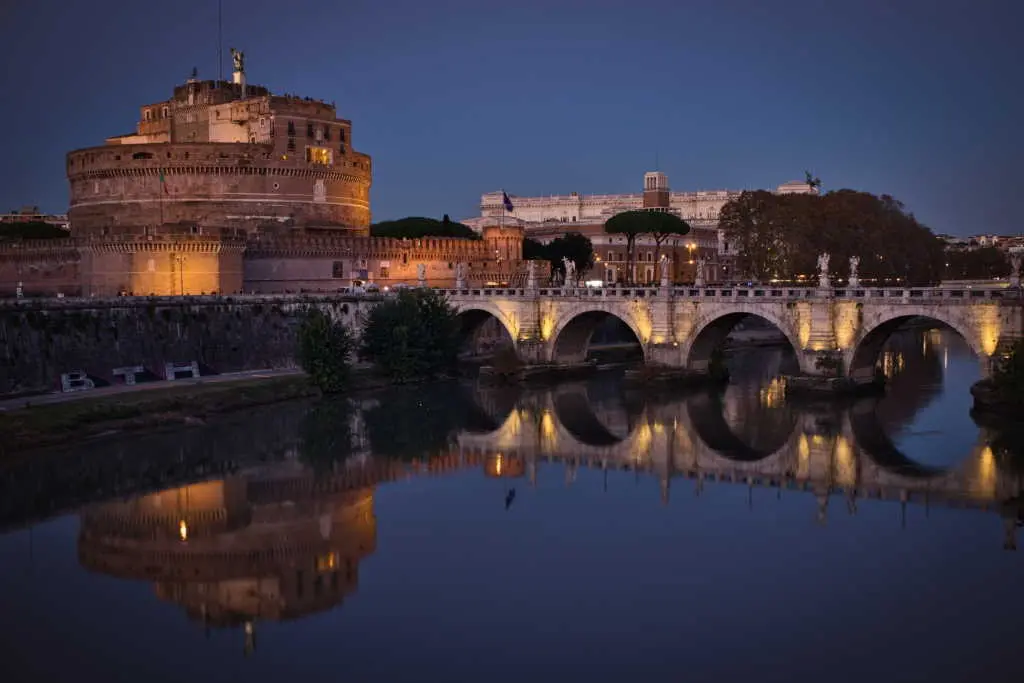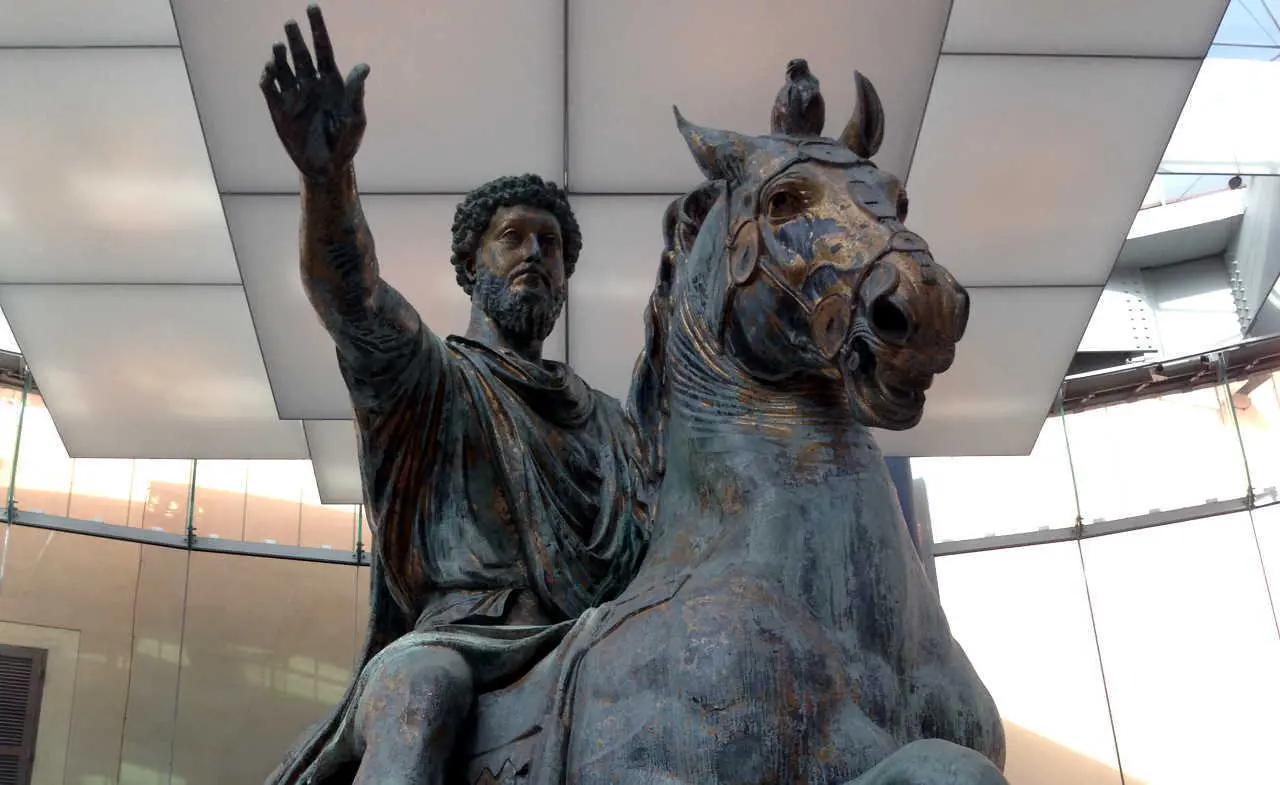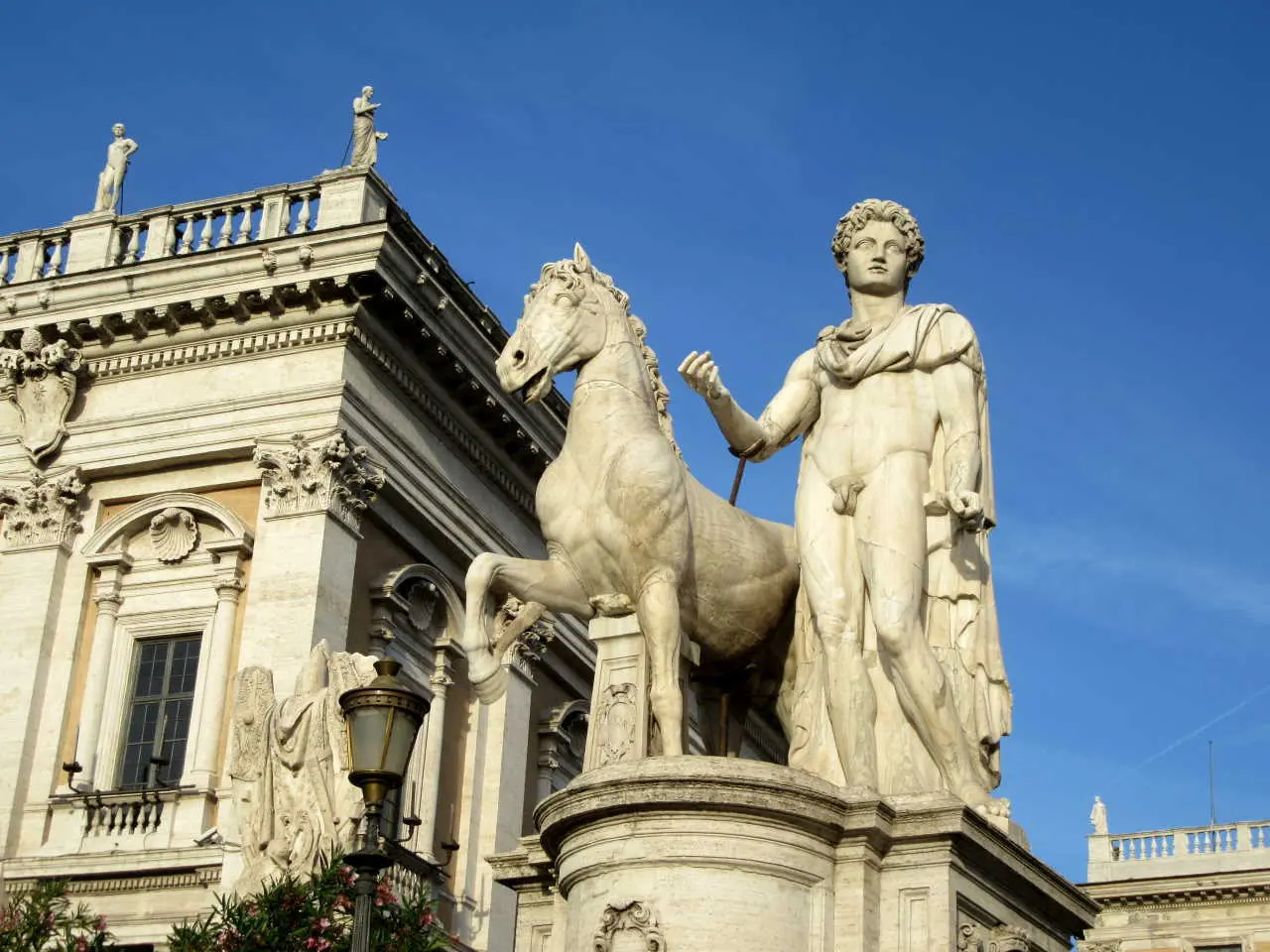Unusual places to visit in Rome
... there are some places hidden outside the mass of tourist circuits...
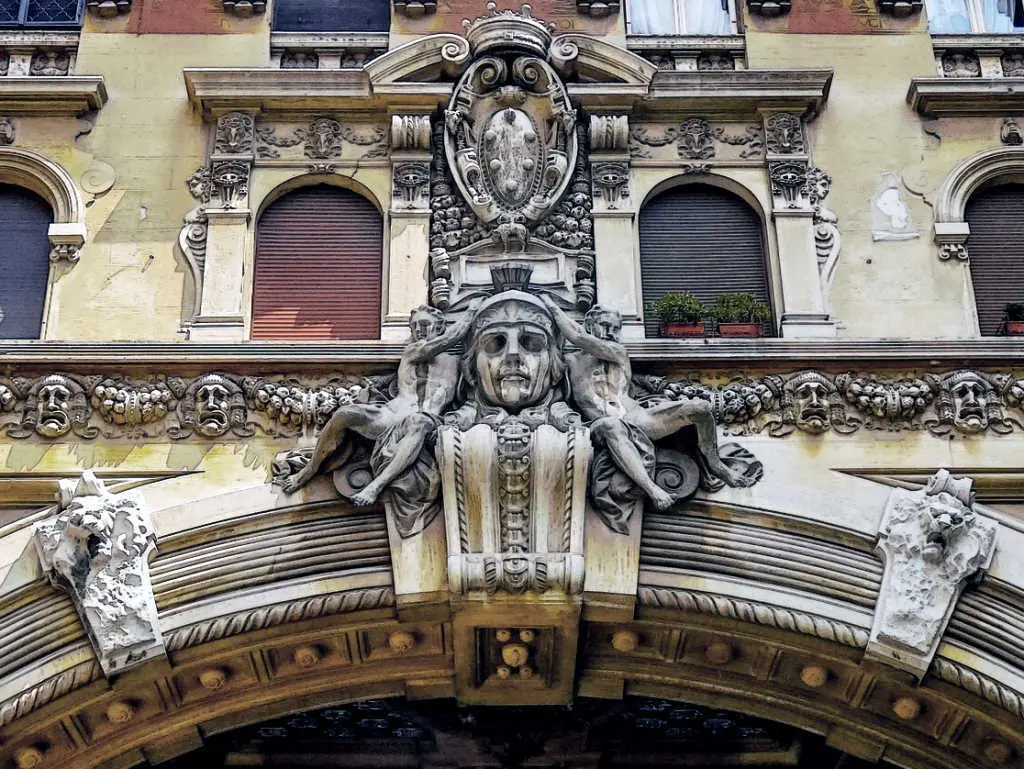
Rightly considered one of the most fascinating cities in the world, Rome is like an immense and inexhaustible treasure chest full of treasures: a lifetime wouldn’t be enough to know them all. However, in addition to the countless symbolic places and monuments highlighted by traditional guidebooks – the Colosseum, the Trevi Fountain, Piazza San Pietro, Piazza del Popolo, Piazza Venezia, just to mention a few of them – there are some places hidden outside the mass of tourist circuits. These places are little known by the Romans themselves despite representing the authentic spirit of the Eternal City, and which are undoubtedly worth visiting.
In this article Argiletum Tour has selected some of the most significant ones:
- The Coppedè district
- The Little London
- The Pyramid of Cestius and the Non-Catholic Cemetery
- The Bunker of Villa Torlonia
- The Botanical Garden
The Bunker of Villa Torlonia
There’re 3 bunkers under the building of Villa Torlonia, the Roman private residence of Benito Mussolini and family at that time: the anti-aircraft bunker built in 1943 to protect his family in the private residence, the Shelter in the central room of the basement of the Casino Nobile and the Cantina della Villa Shelter, equipped around the middle of 1940. Mussolini ordered the construction of the bomb-proof bunker, safer than the two existing shelters, driven by increasingly frequent aerial bombardments.
After some structural and reclamation interventions, these places, continuously monitored, can welcome visitors in complete safety. The full practicability of the sites, set up with original equipment of the time, allows a guided tour enriched by a multimedia room, photographs and panels that present documents of great historical interest.
The Cantina Shelter
The first room used as a shelter was the cellar under the Fucino Lake, near the Theater. It was equipped with security doors and a gas system hand operated for filtering and regenerating air. The lighting was battery-operated, and the shelter also had a toilet, a telephone with a direct line for Mussolini’s use, first-aid kit, and a box spring with mattress.
The Casino Nobile Shelter
The second shelter was more functional than the Cantina Shelter. It was built in 1941 in the central room of the basement of the Casino Nobile on indications of Mussolini, unhappy with the discomfort of the Cantina Shelter. The rooms were equipped with reinforced concrete walls 120 centimeters thick and an air filtration and circulation system.
The Bunker
The anti-aircraft Bunker has a cross-shaped floor plan and round tunnels protected by a covering in reinforced concrete 4 meters thick. The structure of the armored bunker was dug to a depth of 6 meters and a half below the courtyard in front of Casino Nobile. The Bunker was never finished since Mussolini was discharged and arrested the 25th of July 1943. The armored doors, exterior covering of the chamber, and technological features such as the ventilation system were missing.
The Pyramid of Cestius
Outside the Porta San Paolo is located the bizarre Pyramid of Caius Cestius, a funerary monument that an official responsible for sacred banquets had built for his own burial, between 18 and 12 BC. With its 37 meters high, and its cement coated with marble slabs, it is inspired by Egyptian models, fashionable in Rome after the conquest of Egypt (30 BC). A small door on the West side (opened in the 600s, when the pyramid was brought to light) leads into the tunnel leading to the rectangular funerary cell. The walls are plastered and painted in panels, with chandeliers framing female figures (poorly preserved). In the 3rd century the monument was incorporated into the Aurelian Walls.
The Non-Catholic Cemetery
Just a few steps from the Pyramid of Cestius is “hidden” a little profane gem: The Non-Catholic Cemetery, also known as the Cemetery of the English, built in 1716 to host the graves of the Protestant dead.Over the years, the Non-Catholic Cemetery has been populated with the graves of foreign non-Catholics from all over the world, especially Russians, Orthodox, Muslims and Jews. Among the numerous graves of celebrities, we would point out the graves of John Keats, Percy Bysshe Shelley, Hendrik Christian Andersen, Axel Munthe, August son of Goethe, Carlo Emilio Gadda, Gramsci, Amelia Rosselli, Emilio Lussu, Dario Bellezza, Gregory Corso, Lindsay Kemp, Jannis Kounellis, Miriam Mafai, Luce d’Eramo, Andrea Camilleri. High pines and cypresses surround the paths of this unique place, where different faiths coexist peacefully. The most famous funeral monument is the Angel of Pain, one of the most imitated sculptures in the world, created by the American William Wetmore Story in honor of his wife. The Non-Catholic Cemetery is located in Testaccio, a district famous for its nightlife. Address: Via Caio Cestio, 6
The Coppedè district
The Coppedè district is located between Via Salaria and Via Nomentana, it was built in 1915 by the architect Gino Coppedè by the will of the Società Anonima Edilizia Moderna. Coppedè created an astonishing housing complex almost out of nowhere, small villas with pretty bizarre and singular shapes, cornices and moldings in the manner of imperial Rome, an arch that recalls the triumphal arches … a mixture of Roman architecture, Art Nouveau, Art Decò, Gothic, Baroque and medieval elements. Another city, another dimension.
Several famous directors, such as Dario Argento, have used the Coppedè district as a set for their films.
The Botanical Garden
Located in the heart of Trastevere district since 1883, the Botanical Garden is rightly considered a little piece of Heaven in Rome. It covers an area of about 12 hectares, between Via della Lungara and the Colle del Gianicolo. This archaeological area is known as Horti Getae and in ancient times was composed by the baths of Septimius Severus.
The Botanical Garden of Rome is one of the Museums of the Department of Environmental Biology of the Sapienza University of Rome, an authentic concentrate of distant lands: you can go through Japan, Brazil and Australia, until you reach a garden for the blind people, dominated by the aromas.
The main collections of the Botanical Garden are:
The Gimnosperme, the collection occupies mainly the part of the hilly area
The Bambù, this collection is one of the richest in Europe
The Mediterranean Wood is located in the hilly area and represents a testimony of the vegetation that once covered the Colle del Gianicolo
The Palm trees, is a collection of great importance due to the large number of entities that are grown outdoors
The Rose Garden with a significant collection of wild roses present in Italy
The Garden of Aromas is organized in a series of raised flower beds in masonry that welcome species recognizable by tactile characteristics (for example, the pubescence) or olfactory (aroma) and accompanied by Braille tags
The Valletta of Ferns welcomes a collection of herbaceous ferns
The Mediterranean Garden is organized in flower beds, where you can observe typical species of the Mediterranean scrub
The Orto dei Semplici, with medicinal species organized in raised flower beds. Other medicinal species are cultivated in the surrounding area, while others are still present in the adjacent Tropical Greenhouse
Aquatic plants, the aquatic environment in the Museum is represented by the stream, the pond and some tanks
The Monumental Greenhouse has been home to a collection of euphorbias since 1877, and two climbing plants, Quisqualis indica L. and Petrea volubilis L.
The Corsini Greenhouse, built in the nineteenth century, represents the first warm greenhouse built in the garden. It houses a collection of succulents whose families are mostly represented Cactaceae, Agavaceae, Euphorbiaceae and Crassulaceae. There are also two basins that belonged to Queen Christina of Sweden in the period in which she was staying (from 1659 to 1689) at the Villa Riario, now Palazzo Corsini
The Japanese Garden, was built according to a model of oriental garden, is composed of water features, small waterfalls and two ponds
The Tropical Greenhouse, the collection is a small example of the extraordinary plant biodiversity present in tropical forests
Monumental trees, there are several centenary specimens
Little London
Little London is another of those surprises that conceals the Capital. Hidden among the buildings of Viale del Vignola and Via Flaminia, in the Flaminio district, it is a pedestrian street paved with Sampietrini on which colored houses overlook, with iron gates and railings, carved wooden doors and stone staircases in London style. Everything recalls the districts of the British capital such as Notting Hill, Chelsea and Mayfair.
Private Tours of Rome
-
Rome Private Tour by Car for 3 hours
Private Tours of Rome 118,00€ – 288,00€Tour of the main attractions of Rome by Car and Private Guide, without worry about the weather or long walks
Ask for PROMO code
Rome | Private Guide | By car | 3 hrs.
Add to Cart This product has multiple variants. The options may be chosen on the product page -
Bespoke Rome Full day walking Tour
Private Tours of Rome 118,00€ – 309,00€Bespoke Rome full day Walking tour, enjoy your Private Local Guide of Rome for 6 hours, to see the best of the Eternal Town with a customized tour!
Rome | Walking Tour | Private Guide | 6 hrs.
Add to Cart This product has multiple variants. The options may be chosen on the product page -
Rome by night Tour and Dining Experience – Private Tour
Holidays in Rome 111,00€ – 249,00€A pleasant walk through the ancient districts of Rome and dinner in an intimate and elegant restaurant in Trastevere
Rome | By night Tour - 2 hrs. | Dinner
Add to Cart This product has multiple variants. The options may be chosen on the product page -
Rome by Night Tour – Private Driver and Guide
Holidays in Rome 116,00€ – 293,00€Welcome to "Rome by Night with Private Driver and Guide"
Rome | By night Tour | Private Car | 2 hrs.
Add to Cart This product has multiple variants. The options may be chosen on the product page -
3 Tours Package in Rome with Your Local Guide and Driver
Holidays in Rome 343,00€ – 863,00€Tours Package in Rome with your Local Guide and Driver, your access key to Rome. We take care of everything, so you can take the most of your holiday
Rome | Private Guide | Private driver | Taylor made Tours Argiletum Tour Special discount, ask for coupon code
Add to Cart This product has multiple variants. The options may be chosen on the product page -
Private Walking Tour of Rome | 3 hours tour
Private Tours of Rome 67,00€ – 187,00€Private walking tour of Rome with local guide for 3 hours, ecological and entertaining way to explore the major attractions and the back streets of Rome
Rome | Walking Tour | Private Guide | 3 hrs.
Add to Cart This product has multiple variants. The options may be chosen on the product page
travel magazine
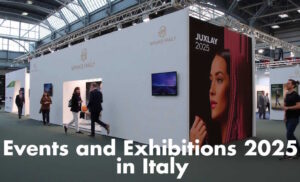
Events and Exhibitions 2025 in Italy
2025 in Italy promises to be a year full of events and exhibitions: from major cultural festivals to art exhibitions, from historical celebrations to meetings with the most innovative expressions of design and technology, the calendar is full of opportunities to explore the creativity and traditions of our country. Whether you are passionate about art, music, fashion, history or gastronomy, you will surely find something extraordinary to discover.
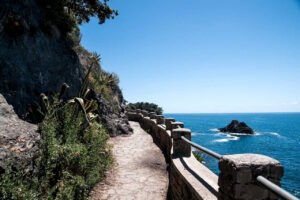
Liguria, where the sea embraces the mountains
A narrow strip of land nestled between the mountains and the sea, Liguria is a region that tells its story through contrasts. Every glimpse is a painting, every alley a tale, every flavor a narrative.
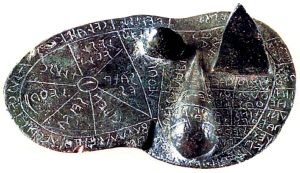
The Etruscans, an enigmatic people from central Italy
The Etruscans represent one of the most enigmatic and influential civilizations of antiquity, a people who inhabited central Italy (particularly the region corresponding to present-day Tuscany, along with parts of Lazio and Umbria, which the ancients called Etruria)
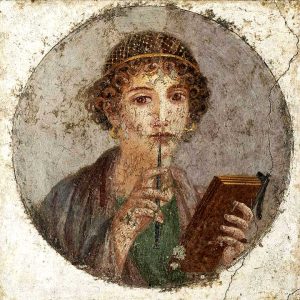
Major Artworks in Italy and Where to Find Them
The main works of art in Italy that every culture lover should see at least once in their life, with directions on where to find them: from Michelangelo to Caravaggio, from Leonardo da Vinci to Botticelli
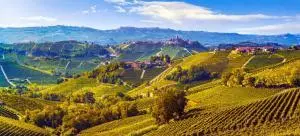
Popular Destinations in Italy – Discovering the Langhe
The region of Langhe inItaly, a UNESCO World Heritage Site, it is renowned for its patchwork of vineyards, forests, pastures, perched medieval villages, and castles. A microcosm of biodiversity, culture, and flavors where tradition and innovation blend in a unique way, symbolizing how nature and humans can collaborate harmoniously to create a distinctive environment.
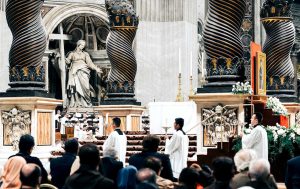
Jubilee 2025 in Rome – A Guide for Contemporary Pilgrims
The Jubilee 2025 will not only be a time of deep spirituality but also an opportunity to boost tourism and the economy of Italy’s capital
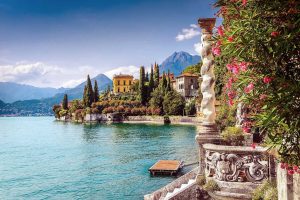
Popular destinations in Italy – Lake Como
Located in the heart of the Lombardy region in Italy, nestled between the Alps and the Po Valley, Lake Como has been described as the most beautiful lake in the world
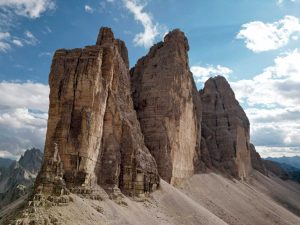
Dolomiti, the mountains in Italy carved by the gods
A unique natural treasure in the world, where breathtaking landscapes, rich biodiversity, and cultural heritage come together in an extraordinary combination. These are the Dolomites. Every visit to these mountains is an opportunity to connect with majestic nature and discover a culture deeply rooted in the region.
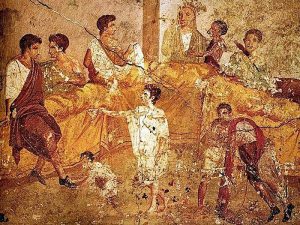
Trimalchio’s Banquet – Ancient Romans at the Table
Petronius, a writer who lived during the reign of Emperor Nero, left us with an unforgettable description of the banquet of the nouveau riche Trimalchio, a rude and exuberant guest. Even though the account is deliberately exaggerated, focusing on emphasizing the character’s vulgarity, it offers us one of the rare chances to get to know the Roman’s culinary taste.
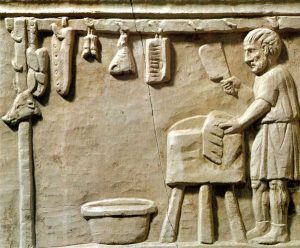
Ancient Romans at the table
Food and Culinary Habits in Ancient Rome. The daily life of ancient Rome is deeply reflected in the eating habits of its inhabitants, revealing a world of contrasts between sobriety and opulence.

Venice, Essential Guide for Travelers
Explore the magic of Venice with our complete traveller’s guide. Discover the most iconic places such as Piazza San Marco and the Rialto Bridge.
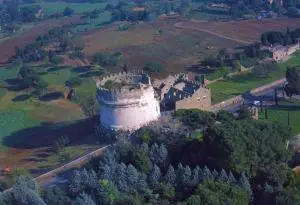
Ancient Appian Way, the highway of Ancient Rome
Known as the “Queen of Roads,” the ancient Appian Way in Rome is one of the most important engineering marvels of all time, a tangible testament to the greatness and mastery of Roman civilization.

Museums to visit in Italy
The museums in Italy offer visitors a rich array of themes, types, and locations, making them a unique experience. Some of the world’s most historically and culturally significant museums welcome visitors to immerse themselves in the depths of Italian history and art.
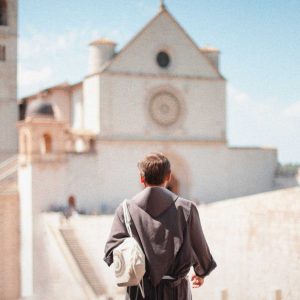
Umbria, land of history, art, nature, religion and flavours
Umbria is a reality suspended between the richness of its history, the depth of its culture, and the majesty of its nature. Located in the heart of Italy, between Tuscany, Marche, and Lazio, it is the only region on the peninsula without a coastline. Also known as the “green heart of Italy,” Umbria is a destination that provides a variety of experiences for visitors.

How I found a wife with Italian cuisine – Rome cooking class
Rome is a fantastic city to take a cooking class, with a rich culinary history and culture. With a little research, you can find the perfect cooking class for your needs

Luxury Vintage Shopping in Rome
The story of an experience lived in Rome, a four-hour shopping tour with an expert guide and a luxury car with driver to discover the best vintage luxury shops in the Capital
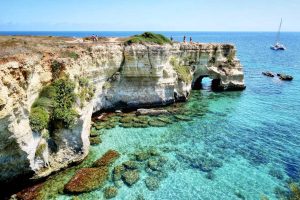
Trip to Puglia, a land to discover
Puglia is truly a land to discover, a hidden treasure in the heart of the Mediterranean. With its temperate climate and four distinct seasons, this region offers a unique tourist experience throughout the year
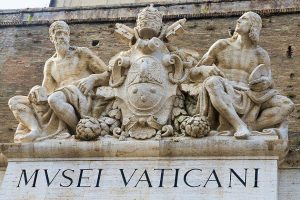
Entrance to the Vatican Museums and Sistine Chapel 2024 and 2025
The Vatican Museums and Sistine Chapel are about to introduce significant changes to their visiting schedule to optimize the use of their collections and provide a more inclusive experience for visitors, leading up to the Jubilee of 2025 in Rome. These changes will take effect on January 1st, 2024.
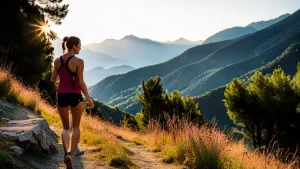
Italy: unconventional experiences for adventurous travellers
Italy is a country that offers a wide range of original and extreme experiences for the most adventurous travelers. Whether it’s exploring the depths of the sea, climbing imposing mountains, or immersing oneself in the rich culinary tradition of the country, there is something for everyone looking for authentic and unique thrills. Italy invites travelers to push their limits, discover new horizons, and live an experience that will remain imprinted in their memory.
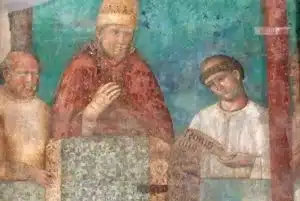
The pilgrimage in Italy
The tradition of pilgrimages in Italy is an integral part of the social, cultural, and religious fabric of the country. Throughout centuries of history, this practice has shaped individual and collective identities, enriching the spiritual and cultural life of those who undertake the journey. Pilgrimage remains a meaningful experience, reflecting mankind’s search for meaning and connection, and a link between the past, present, and future.
